Yes it’s me again, and yes it’s another 4 weeks’ worth of RECAP! It has been super hectic the past few (more than 4) weeks, but I had promised another recap session so here it is.
[Part 1 of recap]: Week 4 @ China or Japan?
TFI-ALP Activity 1
Our very 1st activity, on the 4th June, was a paper plane flying competition. There, we interacted with and engaged primary school level children of Hushu Special School (though they might be of older age than their peers elsewhere). Personally for me, I had almost close to no experience dealing with children of special needs, much less Chinese children of special needs – the need to use Chinese on top of the already present communication barrier just makes it 10x harder at least, and I’m not even exaggerating. That said, however, I tried my best to interact with them (because that’s most important after all) although 90% of the time I was learning how to engage the children and gain their attention instead. The children present are of a wide range of special needs, and figuring out that is just the first step. The student I was with most of the time, 蓝玉 Lan Yu (sorry I forgot to take a photo of him), is one who suffers from autism, and this in itself, is another huge spectrum altogether. Getting his attention already takes up 90% of the time I had with him, much less being able to even begin teaching him how to fold the plane. The kind teachers stepped in to help teach him. In the end, some of the paper planes folded were unfolded to let him doodle on it to gain his attention. I folded him a paper ‘crush gear’, something reminiscent of the childhood of most Singaporeans born in the 90s, as a gift. Though he didn’t take it or keep it with him, I hope my interactions with him had brought something different to his everyday experiences.
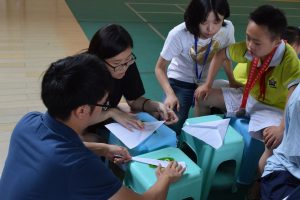
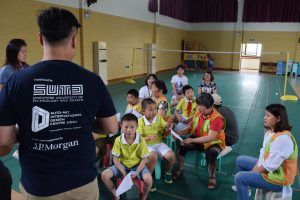
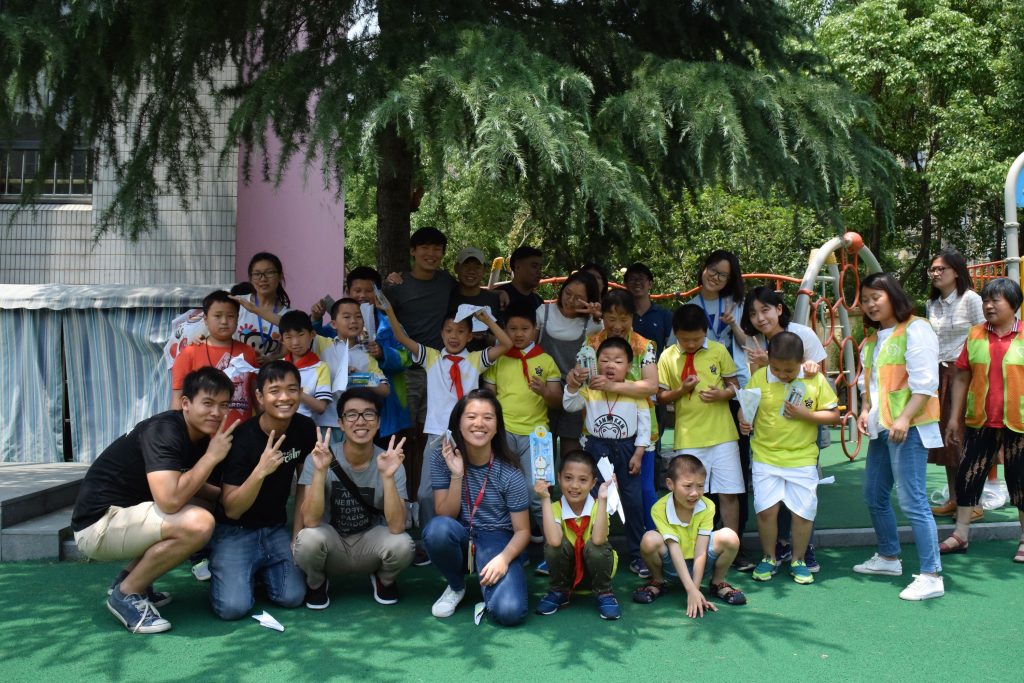
YAMAHA Factory Visit
It was a privilege to be able to visit the Yamaha Factory in Hangzhou. Of course, as you would have expected, no photos are to be taken during the entire visit for business secrecy purposes so instead, I could simply just share my thoughts: This may have been my first visit to a factory, but I know that most factories nowadays are largely automated to aid output. Though technology advances over time, some processes are still not replaceable yet, and so the entire manufacturing process is still largely manual. What I saw was a lot of effort (not blood, sweat, and tears because you know, if these end up in the wood, it can’t be use to make the guitar or the piano) and attention to the smallest details, because of the nature of the manufacturing process. As a musician, while I may not play the guitar or the piano, I still appreciated these painstakingly hand-crafted products, and I could respect each and every worker in the manufacturing line. Still, I wished I could have visited the Yamaha Factory in 萧山 Xiaoshan, which is really only 10km in distance away from the factory we were at (it’s like so close yet so far, considering that we are in China), because they produce drums over there. Oh wells.
TFI-ALP Activity 2
We went back to Hushu Special School a 2nd time the same week, on the 8th June, and had dance lessons planned for the secondary school level children there. The dance lessons were planned, choreographed, and led by Wesson, Timothy, and Kenji. Kudos to them. We were surprised that the kids picked up the dance much faster than expected and so we had impromptu (though they don’t look impromptu at all) performances by Kenji, Marcus, and Timothy to help further entertain the children and the teachers. All in all, we were happy that the children all enjoyed the session we had planned for them. Though not all of us can dance (I speak more for myself as I am far too clumsy to be able to dance), I believe we (or at least I) wouldn’t mind making a fool out of ourselves if it means bringing a smile to all of their faces.
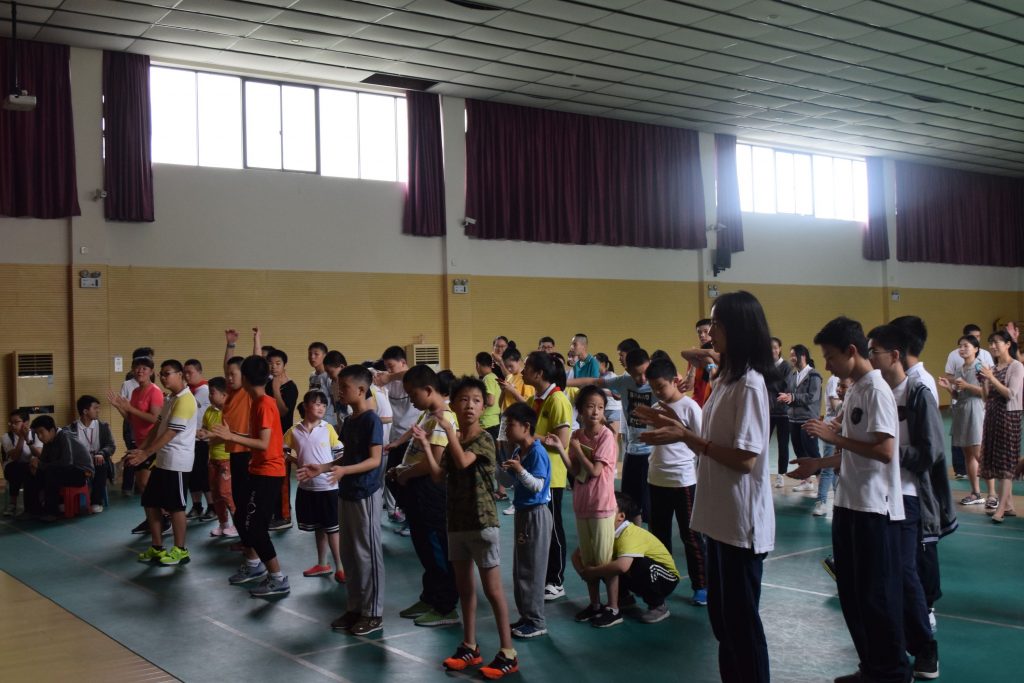
Cremia
I was so stoked when I first heard that Cremia is available in Hangzhou because not all cities in China has it. I decided that I’ve got to get one here after having eaten this in Hokkaido itself years ago. It’s so good, it deserves a post by itself. Initially, I was quite concerned that this was a limited offer after reading an article (written in 2017) found via baidu. Further searches on baidu only revealed older articles. Thus I had decided to call KFC China to clarify. The nearest store is about 4km in distance away from ZJU but even that was easily covered with a bicycle.
Now, for the review: Easily one of the best ice cream ever. The cream is so smooth, and milky, although compared to the Hokkaido one, this is sweeter and less milky. But if you ask me, it has achieved at least 90% of the original taste. As for the biscuit cone, it resembles a type of buttery biscuit, crisp, buttery, sweet, even more so than the cream itself so that its flavour is still able to shine through even after you have enjoyed most of the cream. When you think about it, this is like an entire package, and it’s what I admire a lot about the Japanese – but that’s a story for another day.
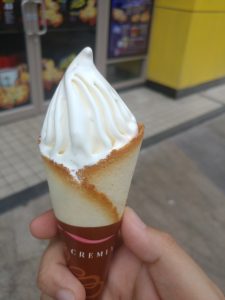
[Part 2 of recap]: Week 5 @ So near yet so far from Hangzhou
徽杭古道 Ancient HuiHang Trail Trek
This was one heck of a trek. It was about 18km of dirt roads, the entire route filled with uphills and steep downhills complete with high stone steps, and very occasional flat grounds. This is probably the most difficult trek I’ve completed so far, especially so since I had a bad knee. At times, I even questioned my own decision signing up for this. Having a stick with me made the going down a little easier as I could put most of my weight on the stick instead with minimal risk of aggravating the already bad knee. As the saying goes, ‘I took an arrow to my knee’. While I didn’t actually ‘took an arrow to my knee’, I used to have almost no problems trekking until I had the bad knee. But if asked whether I would go for another trek again, the answer would be a definite yes.
Berry Picking
The very next day after the super tiring, DOMS-inducing (Delayed Onset Muscle Soreness) trek, we went for a theme excursion (specially organised by our prof) to 慈溪 Ci Xi for 杨梅 Chinese Bayberry picking at our TA’s family’s 杨梅果园 Chinese Bayberry Orchard. We first had lunch where we were shown a very warm-hearted hospitality, with at least 20 dishes per table (imagine eating a 20 course lunch where the food just keeps coming non-stop and all you could think of is how to tell them to stop). Since our lunch place was situated in a village, we enjoyed village fare that was their specialty, and that certain sense of familiarity brought me back to when I was living in the villages.
After lunch, we were told that we were going to ‘爬山’ to reach the Orchard. Upon hearing this, I mentally prepared myself for another ‘trek’ ahead, perhaps regretting the decision made to go for a trek the day before. But turns out, it wasn’t even a trek, nor was it even a mountain. In fact, one might even be hard pressed to call it a hill, although it was on an elevated piece of land. Berry trees decorated the entire place, and their orchard was but 1 small area of it. We were told that we could just directly eat the berries from the trees, and the darker the berries, the riper and sweeter it is. It is my first time eating anything directly from a tree, and I’ve gotta say, it is the freshest and best tasting bayberry I’ve ever eaten. It can’t get any fresher than that. It would be unfair to ask for fresher ones. And because of the rain that day, it was as if the berries were being ‘washed’ and ‘cooled’, giving that extra kick of freshness, even though it made it more troublesome to pick them. We had very much looked forward to the berry-picking and I believe we really enjoyed ourselves throughout.
[Part 3 of recap]: Week 6 @ Familiarity in Hangzhou
TFI-ALP Activity 3
By then, we were pretty much familiar with the people of Hu Shu Special School, and similarly, they with us. The staff had wanted us to really experience what is like to be a student in Hu Shu Special School, to go through the hands-on activities the students themselves go through. Thus, they had planned for us 4 different activities: crafts, tea brewing, making desserts, cooking. I participated in the cooking activity, where we made 葱油饼 cong you bing following some online recipe. While it wasn’t michelin star grade or street side stall standard, it wasn’t that bad tasting either. The only thing was it lacked the fragrance of 葱油 cong you, and so it tasted just like any other normal 烧饼 shao bing. There were only 3 of us in that lesson, and we made so many 烧饼, we let the others try and had more than enough for our own brunch as well.
After our lunch break, it was time for us to teach the students one last thing. We wanted to teach them something fun and practical, so we taught them how to fold paper cranes (fun), as well as, paper boxes (practical). This would be our last time interacting with them, and we hope that all of them had as much fun as we did. All in all, I felt that I definitely gained more than what I had gave, because I could better appreciate what the staffs at special needs school do, and that I view these interactions as precious experiences. To me, it wasn’t so much what we planned for them, but the interaction with these children that I hope had made that little difference, even if it was but a tiny speck in the entirety of their lives.
Mum’s visit
As this was my first time away from home for more than 1 month, my mum wanted to visit me and use this opportunity to visit other parts of China. Her itinerary was Nanjing to Hangzhou to Xiamen. While I wanted to visit Nanjing together with her, I had lessons and TFI-ALP activity 3 to attend, and so I waited for her to come to Hangzhou instead. As I picked her up from the high speed rail station, it was a warming sight of familiarity to be able to see my mum again after a month or so. The first thing she commented about me was that if I don’t speak, I actually blend in pretty well with the local Chinese around me. The moment I do, the accent gives it away, especially so if I use English.
After her check-in to the hotel nearby school, I brought her to somewhere nearby for lunch to let her experience a little of what I see everyday here. But because I had to rush off back to school after lunch to continue working on the assignment from ‘Design Thinking and Expression’ (which will be shared more in the 4th part of the recap), we decided to meet up again for dinner @ 外婆家 Grandma’s home, to try local Hangzhou delicacies (especially 东坡肉 Dong Po Pork, invented by famous Chinese poet 苏东坡 Su Dong Po). I then brought her to the nearby Walmart at 印象城 In Time Mall as part of the experience.
The next day, I walked with her from her hotel to ZJU Zijingang Campus, passing by the famous ‘后街 back street’ amongst SUTD ALP students (although ZJU people know it by another name). I brought her around ‘后街’ a bit before entering school. She was delighted by the cheap and filling breakfast we had at ZJU’s canteen and requested the next day breakfast to be at the canteen too. From there, we went to Xi Xi Wetland Park, as it was near school, to take a look at its natural flora. Tickets were half price (40 yuan) for senior citizens and students. In there, we were slightly disappointed by the sight as this wasn’t exactly the season for blooming flowers – most of them had either already bloomed or are going to bloom in the later part of the year. Next up, we traveled to Meijiawu tea village for lunch and expecting to visit tea plantations. True to its name, you can see tea plantations everywhere throughout the entire village. The entire village is like a hub for 龙井茶 long jing tea production, where each family either grows their own long jing tea or processes it and sells them in containers for visitors and exporting. It wasn’t my first time seeing tea plantations like these but because it’s something my mum loves visiting, I didn’t mind accompanying her at all. Thereafter, we went to 钱江新城 qian jiang New Town, which was situated near the 钱塘江 qian tang jiang (historically known as 浙江 zhe jiang, it runs through the entire province). Qian jiang New Town is like the CBD of 杭州, where there are many skyscrapers that fill the entire scenery, and they look as if they are ‘competing to be higher’ than those around, as in the nature of their businesses. And as if out of nowhere, I spotted a familiar building owned by a familiar company by chance. While I saw a ‘Raffles City Shopping Mall’ owned by Capitaland in Shanghai, I had never expected to see another one in Hangzhou itself. Dinner was back at somewhere near ZJU for handmade dumplings and street side bbq.
The following day, I suggested visiting xi hu since that is what Hangzhou is famous for. We went on a less crowded non-weekend day to avoid looking at the 人山人海 ren shan ren hai when what we really want to look at is the actual ‘山’ and ‘海’ or in this case, the scenery of the lake. Thought it might be my second time there, but I have got to say, the scenery is still quite pretty. And because we didn’t take the boats into the inner islets, we covered more ground around the outside of the lake, into parts of xi hu that I haven’t gone to before then. I could appreciate the slowed-down relaxed pace xi hu brings – like a welcome change to the fast-paced hustle and bustle of the city life; a place of refuge and a place to unwind. After our tour of xi hu, I brought my aunt to 河坊街 he fang jie to walk see walk see a.k.a jalan jalan even though I had never been there before. My initial impression of it was that the decor looked a bit like Chinatown… or was it that Chinatown was made to look like one of the China streets hmmm..?
[Part 4 of recap]: Week 7 @ Just before the Recess Week…
Design Thinking and Expression
My initial impression: I had expected this course to possibly be something related to the aesthetics aspect of design or some kind of art form. But this course was more than that. Each group needed to design a book of something according to their design expression. First, we had to think of a design statement – that will form the meaning behind what we want to design or express. Then think of how to express it. The course instructor encourages us to think of how to express it in a more abstract manner, which is part of the design process. Next, using their paper actuator technology, we design mechanisms that aids in the execution of our expressions. 3d printed material (using ABS or PLA filament) on paper can be controlled electronically or thermally which in turn controls the movement of the paper. But of course, all these were more easily said than done, since they require fine control of the flexibility of the printed 3d material and understanding the interaction between forces – weight of the paper and the bending power of the 3d printed material. Often, these require multiple rounds of testing to be able to understand how it works.
For my group, we chose to do a book of ‘keeping calm’ as we were inspired by my theme’s project, where one of the functions of our table lamp is to help people relax according to a 4-7-8 breathing pattern. Under the guidance and advice of the course instructor and the TAs, we designed our book using multiple circular pods with moveable opening flaps, and they are all arranged in a double spiral format to give it a ‘rotation’ feel. Personally for us, that weekend was hectic because not only did we need to complete this assignment, but also because each of us had already made plans for that weekend – families visiting us and/or travelling out of Hangzhou. But because I was the only one left in Hangzhou, I had to be the one to do it. While I went out in the day with my aunt, I spent my nights (as well as early mornings) doing the assignment. Although more could be done to produce the effect we wanted, I think we were all satisfied with what we had given the time we have.
Caoban Visit
As a foodie, as someone who loves cooking, and as a grub club exco, how could I not sign up for a factory visit of the production of stove tops and the latest technologies used? Needless to say, stoves are very essential in cooking, as they provide the source of heat. But what I’m impressed about caoban is that their design is a 2-in-1 concept that takes into account not just the design of the stove top but also the fume hood, which has a good record of being able to take in 99.8% of all the fumes and smoke produced during cooking. Furthermore, they prioritised safety in their design, where if the flames reached above a certain height or temperature, it automatically shuts off the stove. They take many safety considerations in their design, and it reassures me if I were to buy their product as a customer. Additionally, what I appreciate a lot about cao ban is also their forward-thinking mindset, as seen when they worked with students of Zhejiang University to design their latest smart stove, which includes different sensors to detect flames and temperature when they rise as mentioned above. As an aspiring EPD student who is also working on a smart product, I can’t help but think of how the data collected could be used to further fine tune and optimise the product for usage based on each user because every home environment is slightly different. Machine learning is such a huge thing now and I think it would be cool if the product grows with the user as well.





























